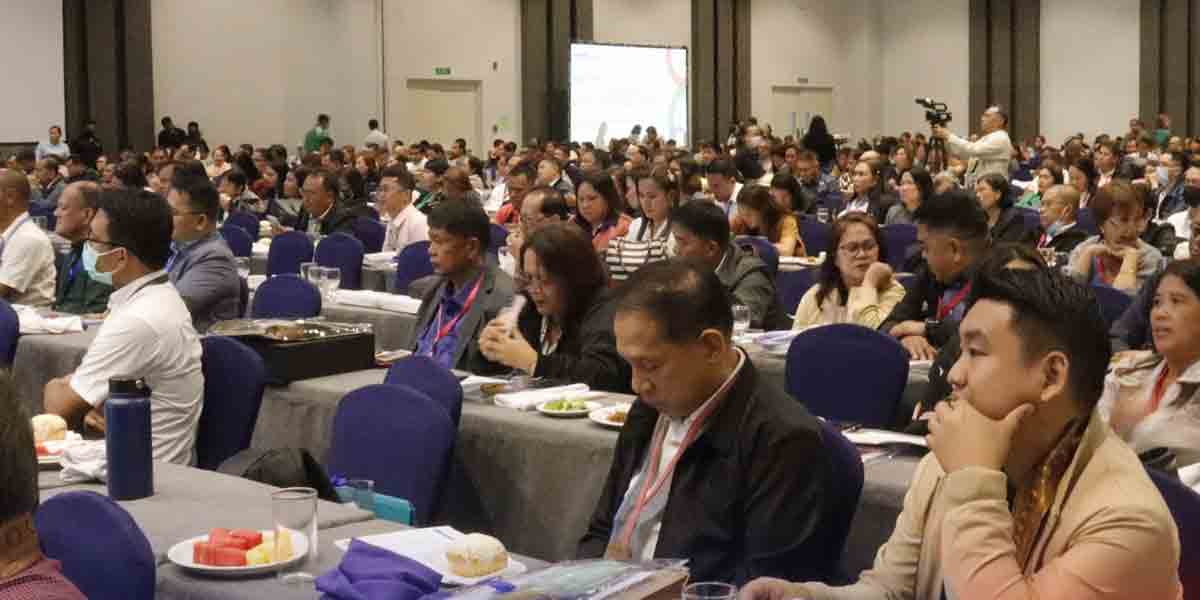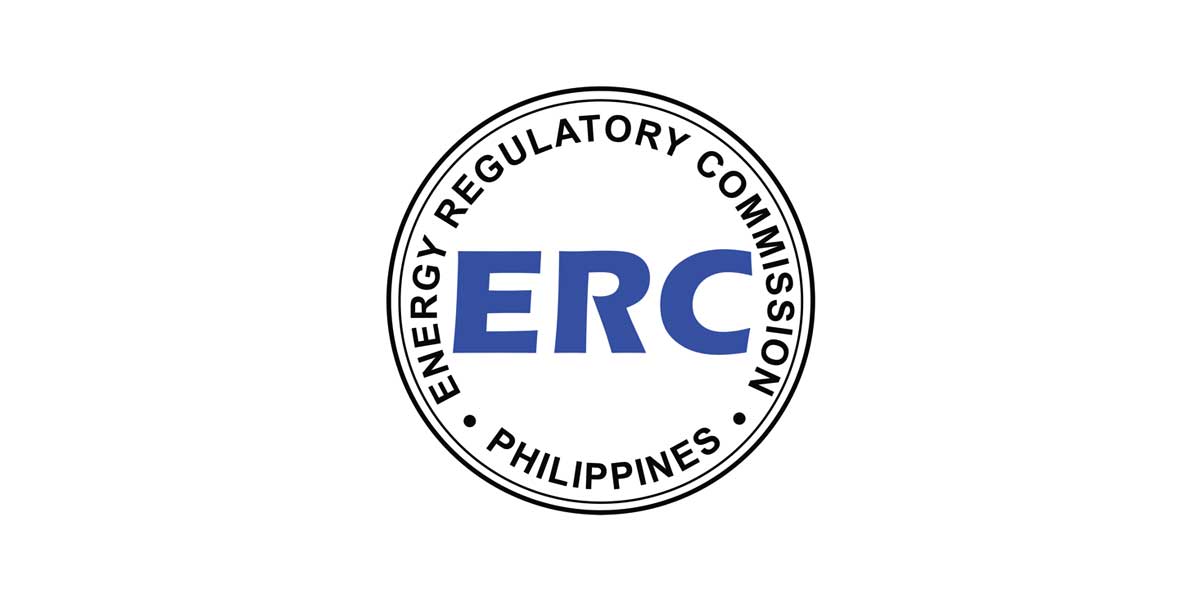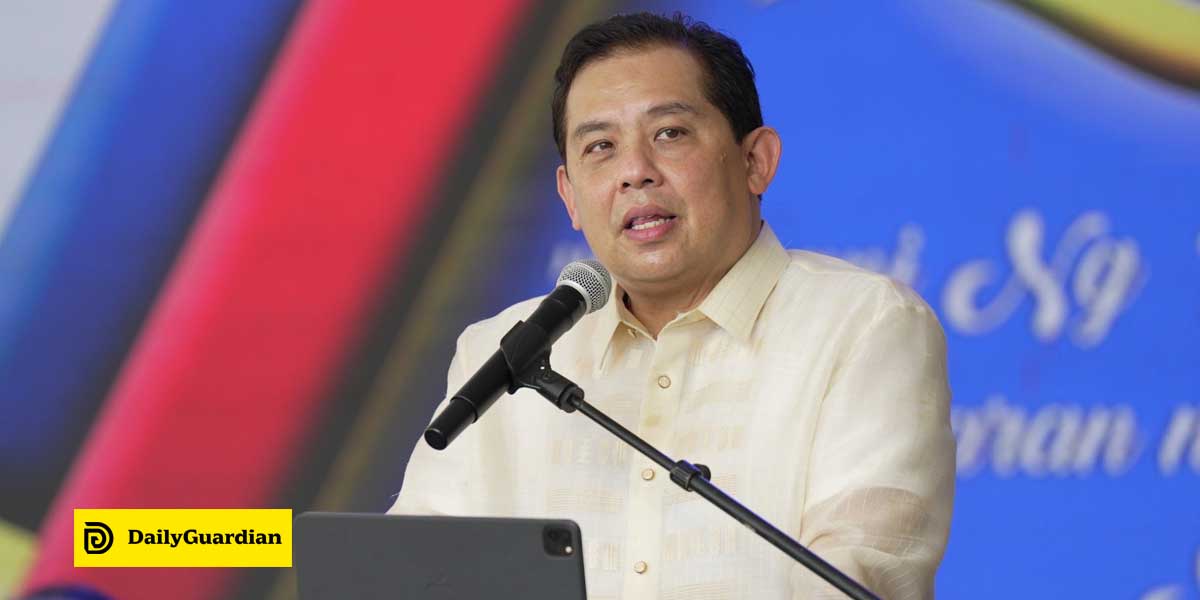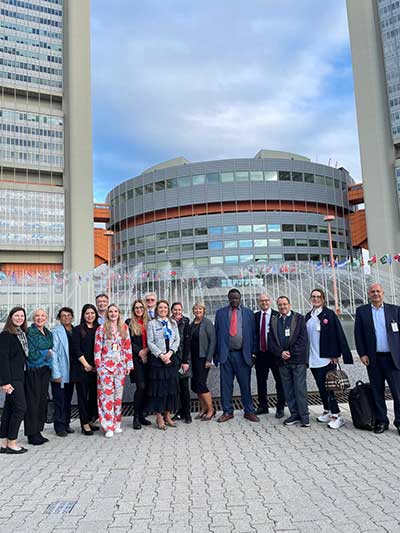
By Stefano Paolo G. Bunag
“Sustainable packaging plays a critical role in UNIDO’s mission as it is cross cutting to our three (3) key thematic areas: 1) supporting sustainability supply chains, 2) limiting climate breakdown and 3) ending hunger.” – Gunther Berger, Managing Director of the Directorate for SDG Innovation an Economic Transformation
“Today marks the beginning of a dynamic collaboration between the government and the private sector intended to bridge the gap in promoting environmental sustainability,” – MMDA Chairman Atty. Don Artes
When you look at a printed image of the Earth, we see a circle. When we look at the diagram showing a circular economy model, it is of course, a circle. In reality, the Earth is a sphere (actually an ellipsoid or oblate spheroid due to its rotation and revolution). While the diagram of the circular economy IS a circle, it’s complexity plus all the nuances of its stakeholders give it dimension – we can then look at it as a sphere as well. It is not as simple as a circular diagram.
This is the complex world of the Circular Economy for sustainability in packaging.
Vienna Sustainable Food Packaging ConFex
Looking back at my short but productive trip to Vienna, I had the privilege of attending the inaugural Vienna Sustainable Food Packaging ConFex from October 9-11, 2024. This event brought together industry leaders, policymakers, and innovators committed to advancing sustainable practices in food packaging, emphasizing the critical intersection of globality and circularity with all its intricacies.
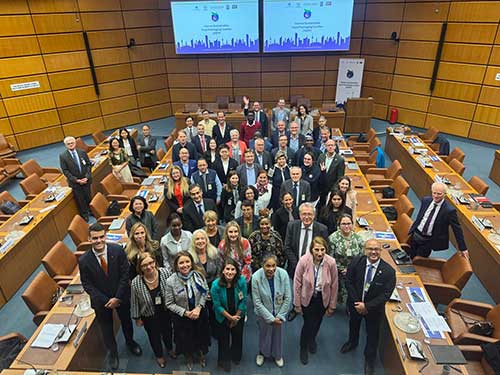
Exploring Innovations at IAEA
The conference kicked off with insightful discussions at the International Atomic Energy Agency (IAEA) Nuclear Sciences and Applications Laboratories in Seibersdorf. Alongside delegates from the World Packaging Organisation (WPO) and the United Nations Industrial Development Organization (UNIDO), we were introduced to various projects that harness radiation technology for food production and preservation. The IAEA’s focus on food safety and control highlighted the essential role of scientific advancements in creating sustainable packaging solutions.
The tour of their testing laboratories, led by enthusiastic technicians, showcased how nuclear technology can be applied to ensure food safety and extend the shelf life of products. This innovative approach to packaging underscores the importance of collaboration across international borders to promote sustainable food systems – with the possibility of addressing packaging waste.
Learning at FH Campus Wien
The second day was dedicated to intensive learning at the FH Campus Wien University of Applied Sciences. Listening to the critical topics surrounding safety, circularity, and sustainability in food packaging emphasized the necessity to act now. Discussions centered on global trends and the local implementation of sustainable practices, emphasizing the need for a robust framework that guides manufacturers and consumers alike toward a circular economy. The knowledge gained from these sessions was invaluable. It highlighted the options we actually have in terms of packaging practices to reduce waste and enhance resource recovery. This commitment to sustainability is essential in addressing the growing concerns about packaging’s environmental impact and resource depletion.
Strengthening Global Partnerships at UNIDO
On the final day of the ConFex, we visited the UNIDO headquarters, where discussions focused on the evolving packaging landscape and the implications of the EU’s Packaging and Packaging Waste Regulation (PPWR). This regulatory framework is vital for promoting sustainable practices in packaging design and addressing food loss and waste in the EU.
The dialogue also zeroed in on the packaging value chain and how innovative designs can facilitate circularity. Programs like Save Food and Safe Food were highlighted as crucial initiatives that leverage packaging to minimize waste and enhance food safety. My main take away here is that we have strength in numbers. Learning, adapting and localizing the programs and initiatives of the international packaging community unifies the goal of minimizing food waste and the impact of packaging waste on our environment. Collaborating with the international packaging community, global institutions and corporations focused on similar goals is essential for accelerating sustainable packaging initiatives.
Local Initiatives: The Road to Zero Waste Summit
A month after the ConFex in Austria, I chanced upon an article announcing a waste
management summit spearheaded by the Metropolitan Manila Development Authority (MMDA) MMDA, on November 5 and 6, held its first-ever Road to Zero Waste Summit. This summit aimed to showcase local practices that support a circular economy in response to the pressing solid waste management challenges in the metropolis. The MMDA’s 10-Year Road to Zero Waste Program represents a significant shift from a linear waste disposal model to a more sustainable approach emphasizing waste reduction and recycling.
General Manager Procopio Lipana outlined the commitment to comply with the Ecological Solid Waste Management Act and the Extended Producer’s Responsibility Act, emphasizing the importance of green procurement and community engagement in achieving these goals.
The summit featured discussions led by experts on various sustainability topics, network mapping for proper waste segregation, and campaigns promoting resource value and waste management alternatives.
The Spherical Circular Economy
These two (2) events provide a glimpse into both global and local initiatives driving the transition to a circular economy. In this one circle, interconnections should emerge to form a three-dimensional representation of the circular economy framework. We can draw from the extensive sustainability and circularity efforts worldwide, identifying successful approaches that can be adapted and localized. Are there innovations we can apply in our respective countries? Can we supply these innovations? Can we be part of the global supply chain for sustainable packaging and contribute to the shift to a global circular economy? What are the limitations we have to work with in terms of legislations on a per country basis? How can we use these legislations in other countries to strengthen ours?
There are still so many opportunities to encourage the shift to a circular economy. On the flip side, there are also a lot of roadblocks, and issues must overcome. The important thing here is, the world is starting to come together to address it. We now have to move together. We have to act now. For us FIlipinos, kailangang kumilos na. #PacKILOSna


